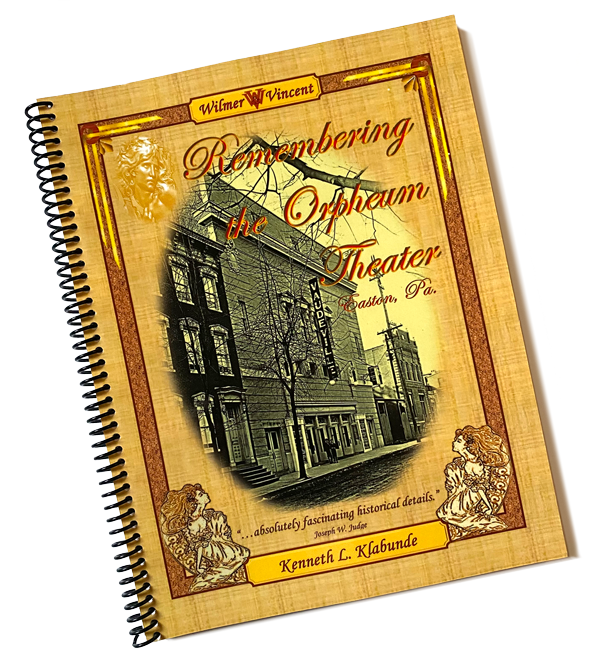About the Book
Remembering the Orpheum Theater is the story of Easton, PA's first real vaudeville theater. It all started on July 23, 1907 when it was announced in the local newspapers that Wilmer & Vincent were planning to construct a 1497 seat vaudeville theater on Front Street in Easton. They broke ground on August 29, 1907, and the theater opened exactly 125 days later on December 23, 1907.
Wilmer & Vincent was a very well-run theater circuit, and during the Orpheum's vaudeville years (1907-1910), Wilmer & Vincent booked the best acts of the Keith and Proctors vaudeville circuit into the Orpheum - everything from dancing elephants to Will Rogers and Buster Keaton. In the fall of 1910, Wilmer & Vincent changed the Orpheum into a legitimate theater and they booked many of George M. Cohan's musicals, Madame Sarah Bernhardt, Blackstone the magician, Ethel Barrymore, Ed Wynn, the great Paul Whiteman's Orchestra, the New York Philharmonic's, the Philadelphia Orchestra, and the John Phillip Sousa Band. They also showed many of the major silent film epics of the day accompanied by twenty-piece orchestras.
There was no shortage of great shows playing the Orpheum, but what was in very short supply were people and box office receipts. Despite dismal attendance and rising debt, Wilmer & Vincent continued to make improvement and tried to make a success of the Orpheum. Finally, in January of 1934 they shut it down and put the theater up for sale. The theater languished there until February of 1943 when it was purchased by the Easton Sanitary Milk Company for a parking lot.
Unfortunately, the Orpheum's story does not have a Walt Disney happy ever after ending, but it is non the less a compelling story. Remembering the Orpheum Theater goes into so much detail with over 60 photographs and more than 100 Orpheum newspaper advertisements within its 115 pages, that you will feel transported back in time.


